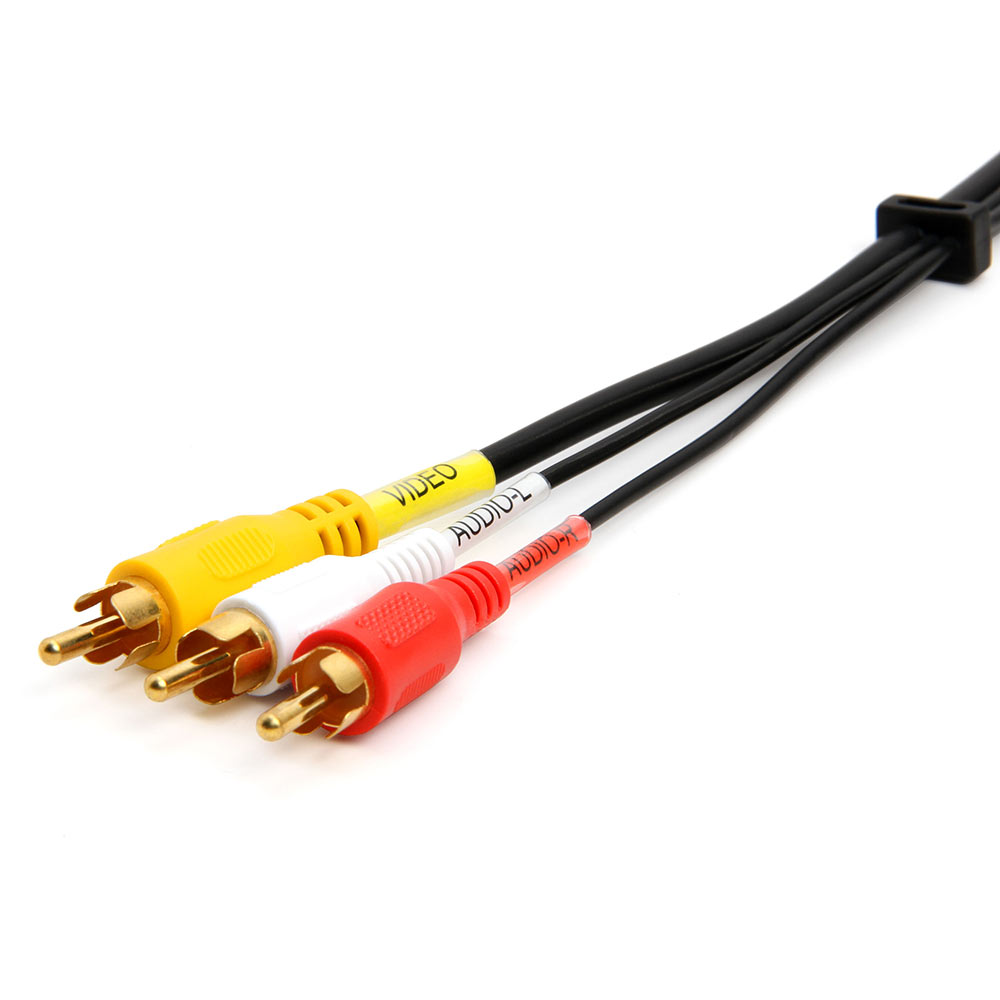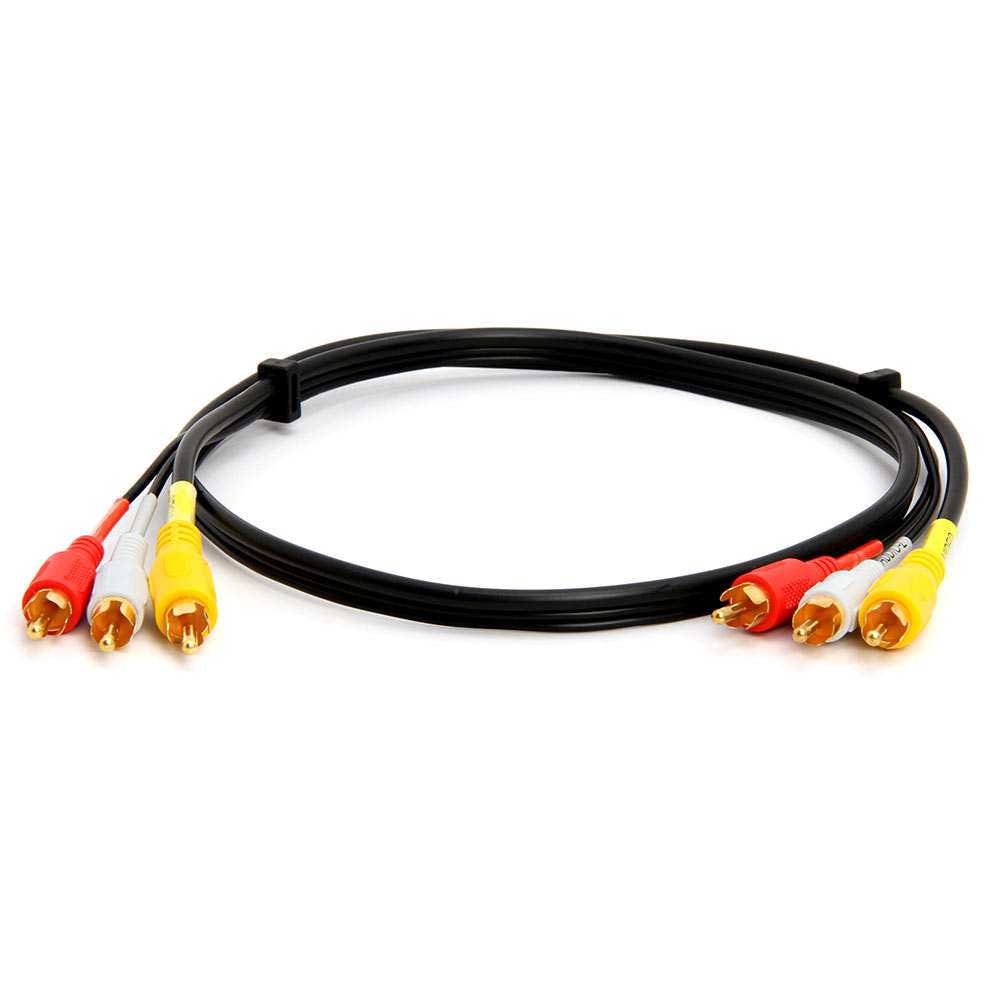Composite Video Cables
Unlike its better counterpart component video cables, composite video cables carry only video signals. The signals are carried over one wire that uses standard analog transmission for videos with the basic 480i or 576i video resolution. The video cable follows the CVBS theory which is Color, Video, Blanking and Sync. Composite video is found in all standard formats like NTSC, SECAM and PAL.
In composite videos, a single wire carries all video components together instead if having a separate wire for each unit. Each signal is divided into individual components that are carried by the single wire.
Components of the Signal
One wire contains all the information needed to re-establish a color picture along with all the required frame and line synchronizations. The color signal of the video is developed by linearly combining the color information or chrominance that is again a combination of saturation and hue; along with picture luminance.
The combination of signals varies for SECAM, NTSC and PAL systems. The base band signal’s frequency spectrum overlap for all color signals that are modulated. Differentiating between the two is simple. Frequency of the base band signal is comparatively in harmony with the parallel scanning rate. Whereas the color signal is not an even multiple of partly the parallel scanning rate. This combination makes a color signal that consists of different frequencies that are in harmony with the base band luminance signal.
To sum up, chrominance and luminance are two of the many frequency division practices. It may sound very simple but these techniques are much more complex than the simple switching between FM and AM bands.
Modulating Signals for Composite Video
It is fairly simple to modulate signals to the correct carrier RF frequency and send it to any broadcast channel. Most video recorders like camcorders use video signals in composite format. The composite video format is divided between two broad types: the true composite format and the modified format. Laser discs are the only equipment that store a true composite format; whereas, videotape, industrial and commercial formats use the modified composite video format.
The good part of these devices is that they give users options for the output of all base band signals or allow them to modulate the frequencies on UHF or VHF (like a TV tuner). Standard NTSC video signals are recorded and reproduced directly by the ‘professional television production uncompressed digital video’ through the use of PCM encodin
When used at home typical, composite video cables use RCA connectors. The RCA plug is usually yellow and it may have two accompanying audio channel wires. The audio channel wires are usually white for left and red for right audio channel.
Good quality coaxial cables and BNC connectors are used in most television studios and professional post production applications. Early home VCRS used BNC connectors. Most of Europe uses SCART connections and therefore does not use composite video cables for DVD players, video game consoles and computers.
Like component video cables, the impedance of composite video cables should be 75 ohms ideally but can also be within close proximity of 75 ohms resistance.
Composite Video Signal Modulators
Devices that were in use before the new millennia produced composite video signals. To convert the signals and to regulate them these devices were usually fitted with a modulator that converted signals to radio frequency. The modulator could be placed externally or it could be in-built with the device.
With different countries all over the world having different modulation standards, manufacturers thought it wise to create a single product and have an external regulator attached to it making it easy for them to sell their products in different countries all over the world.
Demodulation of Radio Frequency Signals and the Losses
Radio frequency connections have several losses and that is why composite cables are better suited to transfer video signals from one device to another. The major radio frequency modulation issue is the loss of signal content during demodulation. Radio frequency is already very noisy and finding a frequency that has no distortion or external connection is difficult. That is because there are excessive amounts of radio frequency signals available already. So the process of modulating the video signal using RF techniques and then demodulating it introduced several losses.
It is important to remember that all composite video signals travel in an analog format and therefore introducing too many signals within a single signal will have the same affect as demodulation and that demodulation has on radio frequency signals. This affect is known as dot crawl in composite video signals. The dot crawl effect can be seen when chrominance is sent with a higher bandwidth and it reaches the luminance frequency spectrum.
To overcome this issue, component videos signals and cables were introduced as they separated the components of the signals allowing no merging of frequencies and loss of signal. Another way to avoid signals from mixing together is to use comb filters. These filters are used with composite video signal wires. The comb filters help in separating signals and also reduces the possibility of data loss that can occur due dot crawl.
Television screens have helped in extending the composite video standards. Since the edges of the pictures are cropped and the vertical blanking interval if the video signal is hidden by the television screen, extensions have been made to take advantage of these conditions.
Closed captioning, teletext, and all such information that is of technical importance is added to the signal but is truncated due to the limited view from the screen.
Composite video cables are shielded like component video cables to avoid distortion and noise from entering the video signal. The composite wires are mostly used for DVD and other related video devices that have RCA connectors attached to them.
Composite video cables that are of good quality use copper as the center conductor and can be found in varying lengths.





